#Antarctic Plants
Text

Antarctic Pearlwort (Colobanthus quitensis)
Family: Pink Family (Caryophyllaceae)
IUCN Conservation Status: Unassessed
Brutal cold, intense winds and a lack of terrestrial resource makes Antarctica by far the least biodiverse continent on earth, and while land plants are particularly rare in the area surrounding the south pole, two species of highly specialised flowering plants have managed to survive; a tough, low-growing species of grass called Antarctic Hairgrass, and a small, superficially moss-like relative of campions, chickweeds, stitchworts and pinks; the Antarctic Pearlwort. Found mainly in coastal areas where they typically grow attached to sturdy rocks, members of this species grow low to the ground to avoid being uprooted by wind, possessing thick, waxy leaves to reduce water loss through salt spray, wind and evaporation resulting from sunlight reflected from snow, and produce antifreeze-like proteins in their leaves to prevent their internal stores of water from freezing and damaging their tissues. Although they produce pale yellow flowers Antarctic Pearlworts cannot rely on animal-based pollination (with Antarctica's only insect, the Antarctic Midge, being flightless and spending much of its life underground,) and as such they instead allow their pollen to be carried away by the wind, fertilizing the flowers of other members of their species and allowing for the production of small, waxy fruits (which, in the absence of terrestrial frugivores to swallow them, drop their seeds to germinate wherever they fall.) As anthropogenic climate change causes increases in average temperature across Antarctica, Antarctic Pearlwort populations are rapidly increasing as the conditions around them slowly become more conducive to plant growth. As such, monitoring the population size and current range of this species can provide useful insight into how drastically the earth's poles are changing.
--------------------------------------------------------------------------
Image Source: https://www.inaturalist.org/taxa/428806-Colobanthus-quitensis
#Antarctic Pearlwort#plant#plants#biology#botany#wildlife#Antarctic wildlife#adaptations#Antarctic Plants#wildlife biology#polar wildlife
15 notes
·
View notes
Text

Samuel Page - Dr Cockayne, botanist, inspecting native florae. From the album: [1907 Sub-Antarctic Expedition]; circa 1908; North, W.
#Samuel Page#Auckland Islands#Dr Leonard Cockayne#1907 Sub-Antarctic Islands Scientific Expedition#expedition#gelatin silver print#plant
135 notes
·
View notes
Text
Me @ myself: You are academically desirable. Professor desire your abilities and perspective. You will find a program that fits your aspirations. And it will be awesome. Chill the fuck out.
#im shocked everytime i email a prof abt coming on as a phd student and theyre like: ur background looks perfect!#and like no shit thats why i emailed them but i still feel like the undergrad wuth zero lab experience#this last guy i emailed does arctic or Antarctic stuff at a uni in Canada#and like it does seem pretty sweet. but he works on green algae#and im like .... hm dare i abandon my cyano babies for green algae????#like im warming on plants so i think i could take that step but it still feel wrong to me#i just love my cyanos a lot :-( but this would life at the extremes#focusing on photosynthetic pathways and in the arctic. which would be the polar opposite to my current situation weather wise haha#also i went to Canada once when i was like 10 so it would be cool to go there as an adult#blah. idk.#also i survived the cave lol got dive bombed by some bats but it was all good 👍#unrelated
22 notes
·
View notes
Photo
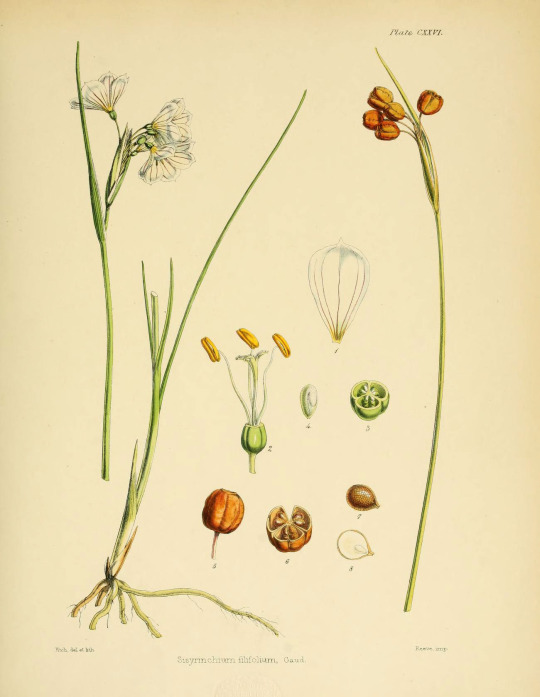

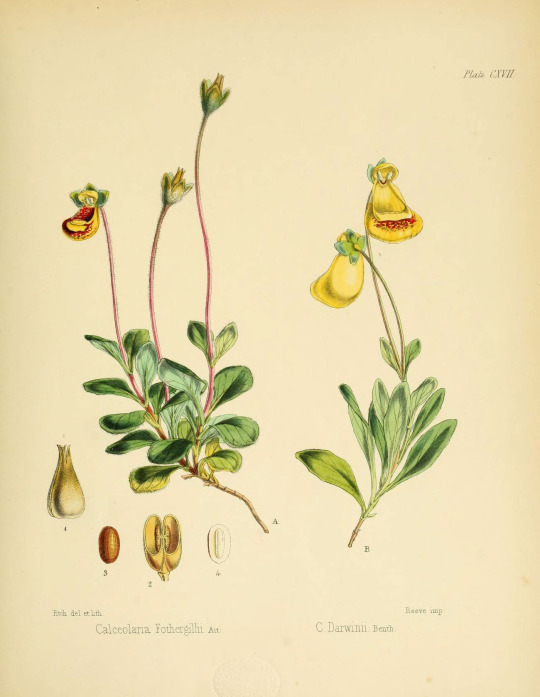
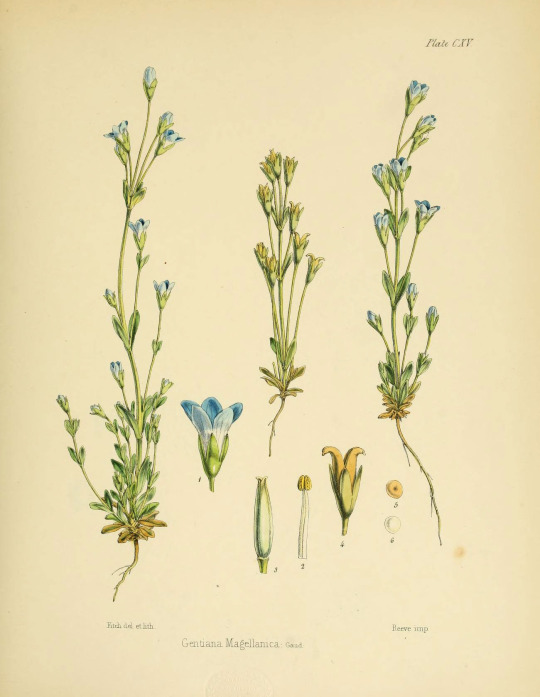
The botany of the Antarctic voyage of H.M. discovery ships Erebus and Terror in the Years 1839-1843. v.1. plates
10 notes
·
View notes
Text
Time for Special Topic 0; oddly not the name of a government secret
1 note
·
View note
Text
So we know that when Quirks first appeared, villains started making grabs for power, vigilantes appeared to stop them and restore the normal order, and some people went about forming their own dynasties with people who had similar powers.
Personally, I really want to hear more about the environmentalist vigilantes who ignored the immediate chaos and just took off to undo the harm humanity caused to nature.
People with ice Quirks who formed a coalition and rebuilt the arctic and antarctic circles.
A random person with a Quirk that allowed them to breathe in carbon gases and exhale oxygen, so they just took a couple hours out of their day peacefully reading books near a factory complex while advocating for cleaner emissions in the meantime.
The ones with plant-based Quirks stimulating plant growth in deforested areas.
Someone with an accumulation-type Quirk who could consume plastic and convert it to energy.
Other Quirk-users specifically targeting poachers
Electricity Quirk-users forming power companies of their own and stamping out the more harmful competition.
People who can talk to animals teaching animals hunted for sport (or harvested for medicinal remedies that don't work) how to avoid hunters and traps.
In the eyes of large corporations, some of these people were probably relegated to the status of villains and may have been targeted by the proto-Heroes as such, only to be met with the controversy of environmental advocates against environmentally destructive companies.
Fictional nations like Otheon and Klayd have sprung up in the My Hero world, so it stands to reason there are other new nations as well. Like if these early advocates carved out territories of their own and now areas like the Amazon or pockets of the savannah and taiga and other threatened ecosystems are currently independent oases thriving in the world.
All things considered, I feel like for all their societal problems, the My Hero world is a world that at least has its environmental stuff sorted out.
274 notes
·
View notes
Text
Wet Beast Wednesday: tardigrades
Last week on Wet Beast Wednesday I covered the largest animals to ever exist on our planet. This week I'm going to pull a full 180 and cover the smallest animals yet on this series. Meet the tardigrade, the internet's favorite micro-animal the is said to be basically immortal. How true is that? Let's see.

(Image: an electron microscope image of a tardigrade. It looks a lot like a potato with eight stubby legs tipped with long claws. At the front is a small, circular mouth. It has no other discernable features. In the background are bits of plant matter that look like seaweed at this scale. End ID)
The tardigrades are 1,300 known species (and probably a lot of unknown ones too) in the phylum Tardigrada. They are also part of the superphylum Ecdysozoa, which are animals that grow by molting their outer cuticles or exoskeletons. In particular, the tardigrades are believed to be a sister group of the arthropods, the group that contains crustaceans, insects, isopods, and a lot of other things. Tardigrades are truly tiny, the largest species reaching a whopping 1.5 millimeters in length, though most species reach no more than 0.5 mm. They have round, segmented bodies with four pairs of legs that end in either claws or suction discs. The body segments consist of a head, three body segments with a pair of legs each, and a caudal segment with the final pair of legs. The first three legs are used for movement while the final pair points backwards and is used for grabbing onto substrate. All of the body segments except for the final one correspond to segments found in the head section of insects. Tardigrades are missing many hox genes, genes that direct the body plan during development. Their ancestors may have had a body plan more similar to insects, but the loss of the hox genes has compressed them into walking heads with a bit of butt. The mouth is tubular and sucks in food. In the mouth are stylets, needle-like structures used to pierce food objects. Once food is drawn into the mouth, a structure called the buccopharyngeal apparatus activates. This is a combination of spines and muscle that acts like an inner jaw that pulls food into the digestive tract. The buccopharyngeal apparatus is distinct enough to be used as a major identifying feature between species. Tardigrades are translucent and many images you've seen of them have false color to show the details or are 3D models based on scanning electron microscope imagery of them. Tardigrades molt their exoskeletons multiple times (up to 12) during their lifecycle. Some species are unable to poop normally and instead all their waste is discarded during the molt. It was formerly believed that tardigrades could exchange genes with each other without mating, a process called horizontal gene transfer that is seen in bacteria, archaea, and other micro-organisms. It has since been discovered that while still capable of horizontal gene transfer, it is quite a bit rarer in tardigrades than we thought.
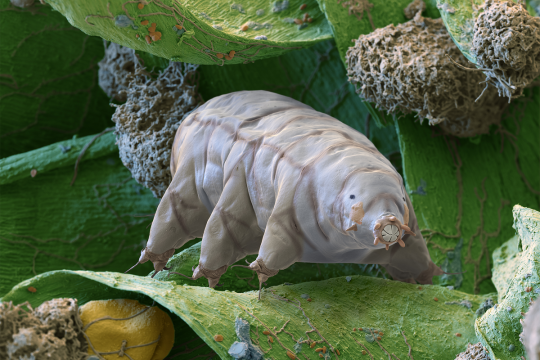
(Image: an electron microscope image of a tardigrade standing on a bit of plant matter. This one has a closed mouth with a ring of triangular tooth-like structures. It also has two simple eyes that look like black dots. End ID)
The name "tardigrade" means "slow walker", which is fitting as, despite their eight legs, tardigrades have a slow and awkward gait. This is the result of their legs being unjointed, only able to pivot at their connection to the body. Their gait has been compared to that of bears, hence why they are often called water bears and their discoverer, Johann August Ephraim Goeze, called them "kleiner wasserbär", meaning "little water bear". Tardigrades are found worldwide and have inhabited virtually every habitat, from the tops of mountains to the deep sea, from hot springs to the antarctic, from freshwater to saltwater. The one thing they have in common is a need to stay wet. Tardigrades can survive out of water as long as they can stay moist and are often found in mosses, hence another common name: moss piglets. The majority either eat plants or bacteria, but some will feed on smaller tardigrades or other micro-animals. Their famous survivability makes it easy for tardigrades or their eggs to be carried to new habitats by larger animals or other phenomena. Tardigrades are one of the first micro-animals to colonize a new habitat and they are a pioneer species, the first species to colonize a new environment and whose presence makes that environment fore suitable for other species to follow. Tardigrades are a major food source to other micro-animals and larger organisms. Most species have distinct males and females, though a few reproduce through parthenogenesis. In most cases, molting female will lay her eggs in her shed cuticle and males will them fertilize them. Other species have a form of internal reproduction. Males and females will court each other before mating and females will usually allow multiple males to fertilize her eggs. Female tardigrades are typically larger and more abundant than males. Eggs can take up to 14 days (species dependent) before hatching. All tardigrades of the same species have the exact same number of cells as each other. They are also born with the same number of cells they will have as an adult. Their growth is driven by enlargement of the existing cells rather than cellular reproduction making new cells. The lifespan ranges between a few months to a few years, depending on species.

(Image: a color photo of a tardigrade. It is a pale, translucent white, making it hard to make out details. Its body is curved, with the front end pointing at the camera. It has two simple eyes. End ID)
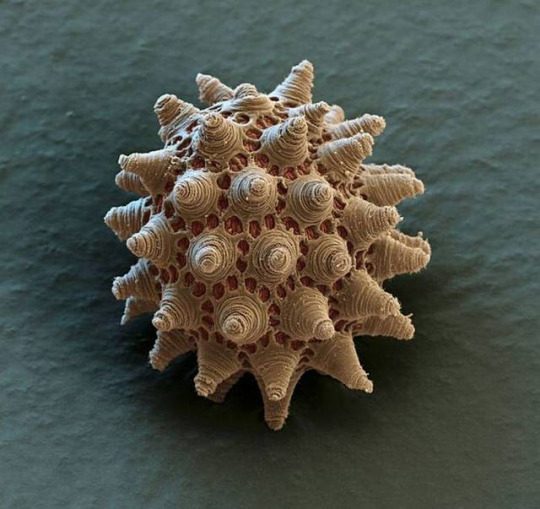
(Image: an electron microscope image of a tardigrade egg. It is round but covered in small pores and conical structures. End ID)
The most famous feature of tardigrades is their legendary durability. It is commonly said that tardigrades can survive just about anything (except for the things that are actually trying to kill them. They are prey to a lot of species after all). Among the things they can survive is extreme heat, extreme cold, dehydration, extremely high and low pressure, exposure to ionizing radiation (that's the scary kind), low oxygen environments, environmental toxins, heavy impacts, and the vacuum of fucking space. While the can survive in extreme conditions, tardigrades are not considered extremophiles. True extremophiles thrive in extreme environments and are negatively impacted by leaving them. Tardigrades can survive in extreme environments, but are negatively impacted and can't survive as well there as they can in less extreme places. The main trait that has allowed tardigrades to survive all five mass extinctions in history is cryptobiosis. Cryptobiosis is the rare ability for an animal to enter a state of dormancy where their metabolic processes come to an almost complete stop. While in cryptobiosis, metabolic activity drops to 0.01% normal and water content drops to 1% normal. In this state, the tardigrade is called a tun. Tardigrades usually enter cryptobiosis in response to arid conditions. One experiment showed that a species of tardigrade could last for at least 30 years in this state and return to normal lifestyle functions when exposed to water. Tardigrades will also enter cryptobiosis in response to low oxygen, toxic chemical exposure, increased or decreased temperature, and excessive salt content in the water. Tardigrades also show extreme resistance to both high and low pressure. They can live in 0 atmospheres of pressure and some species can survive up to 6,000 atmospheres, more than double the pressure at the bottom of the Marianas trench. More interesting is their ability to survive dangerous radiation. They can survive 1,000 times the dose of gamma radiation that humans can. Early tests focused on tardigrades in cryptobiosis and concluded that the extremely low water content of a cryptobiotic tardigrade doesn't leave much opportunity for the radiation to react with the animal. However it was later found that active and fully hydrated tardigrades are still considerably resistant to radiation. Studies into this resistance indicate that tardigrades can very efficiently repair damaged DNA and have unique proteins called Dsup that provides additional protection. Dsup introduced to human cells has provided additional protection against x-rays.
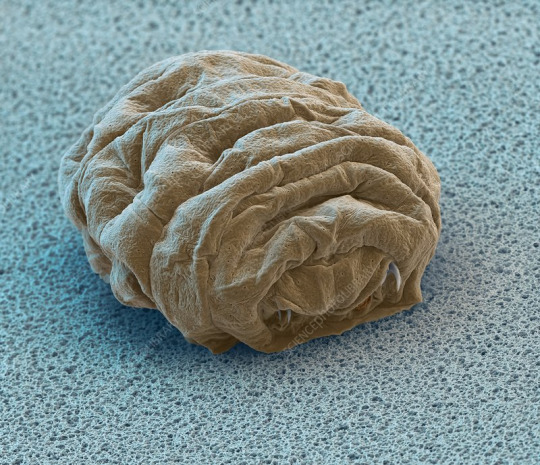
(Image: an electron microscope image of a tun - a tardigrade in cryptobiosis. It is smaller and very wrinkly, with the legs and mouth retracted into the body. End ID)
Tardigrades were the first animals to be exposed to the vacuum of space. They were exposed for 10 days, some in a state of cryptobiosis at the time of exposure and some still active. It was found that they were able to survive the vacuum when shielded from the sun's ultraviolet radiation, with those already in cryptobiosis doing better. Upon being rehydrated, many were able to resume normal life functions and successfully reproduce, though others died after being rehydrated. Those that were exposed to UV radiation fared much worse, with only a few hydrated individuals surviving. The individuals in cryptobiosis had a lower survival rate when exposed to UV than those not exposed to UV and were less successful at reproducing afterwards. Studies of tardigrade's space survival abilities and resistance to radiation could go a long way in helping human space travel. One of the largest dangers of space travel is that space is full of nasty radiation from the sun that Earth's magnetic field protects us from. Some scientists speculate about the possibility of accidentally seeding other planets or moons with tardigrades or other space-resistant organisms. This is a problem because introducing Earth life to other world has the potential to damage any native ecosystems and if we find life in space in the future we don't want to have to figure out if it's something we accidentally put there. While tardigrades could likely survive on other planets, they would eventually die without a food source. Some sources reported that tardigrades may have colonized the moon after an experiment with them crashed. Unfortunately, the moon is not crawling with tardigrades now. It's way too dry for them to exit cryptobiosis even if they survived the crash, which they probably didn't.
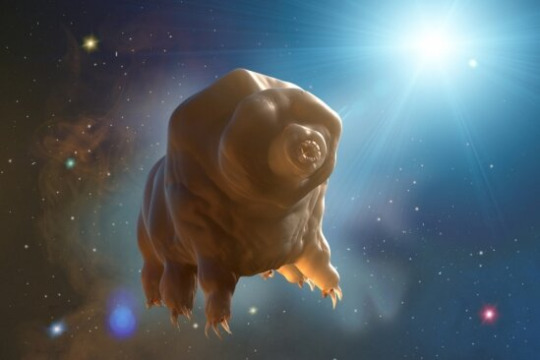
(Image: art of a tardigrade floating in the vacuum of space. End ID. Source: University of California - Santa Barbara)
#wet beast wednesday#tardigrade#water bear#moss piglet#micro animal#microbiology#marine biology#biology#zoology#ecology#animal facts#informative#science#space#astrobiology#radiation#cryptobiosis#tun#image described
168 notes
·
View notes
Photo
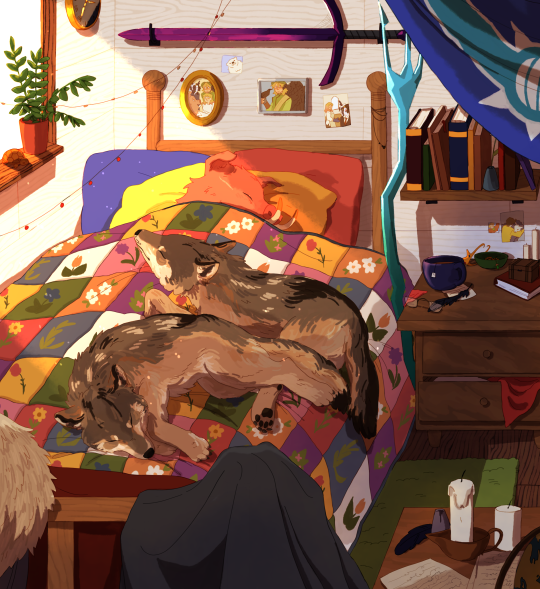
sleep well, buddy
[id: digital art of technoblade, an anthropomorphic pig, sleeping in bed. his room has white wooden walls, a green carpet, a colorful quilt with flowers and multicolored pillows; a nightstand with a mug of tea, glasses, a book, a crown, and a bowl of jewelry, and candles; a desk with candles, paper, and an ink pot and quill; cloaks hanging off the bedposts; an antarctic empire banner hung across a wall; a trident stood next to the bed; and a sword and clock on the wall. there are photos pinned and framed on the walls: one of techno, niki, phil and ranboo smiling together, one of phil smiling while holding a crow, one of steve, one of niki and ranboo baking, one of tommy taking a selfie, and one of ghostbur hugging friend. there are two grey wolves asleep on the bed with techno. on the wall is a window with a plant and turtle figurine. the window is shining golden light into the room. end id]
5K notes
·
View notes
Note
Pleaseeeeee write more Floyd omg I'm so in love with the way you write <3333
AHH thank you, he’s so bb I love him so so much ,,,
This is been my little brainrot for a bit all day yesterday:
━━━━━━━ ✦❘༻༺❘✦ ━━━━━━━
. . . ⇢ ˗ˏˋ Mistletoe ࿐ྂ
Floyd never felt so giddy like he did today, well, perhaps not as much as he felt when he was reunited with his brothers but it was close. His cheeks burned a soft purple constantly since he’s been up, the flush sometimes adventuring to his ears and down his neck, he was sure his chest was covered too but he would like to pretend no one could see. Or maybe people did see and didn’t care to point it out as many were doing the same thing.
He held the present close to his chest, his ears wiggling and flattening out as he buried his small snout into it, inhaling the scent softly as his tail wagged behind himself. He felt overwhelmed, not sure how to go about anything and inhaling the soft cinnamon scent of the wrapping and bow he used did help ground him. With a soft sigh he lifted his head back up, fixed his furred collar of his jacket vest around his neck - in attempt to cover the blush traveling down rather than the cold, his brothers never were really affected by it like the other fellow pop trolls.
However his feet didn’t move still, he felt planted in place, it was just exchanging gifts right? There wasn’t anything too difficult with it? But to him, it meant and felt so much more to him, like it was so much more special to give this gift to you. He’s used to giving gifts to others all the time, but he couldn’t help but feel a little dejected if you didn’t like it.
He was taken out of his internal stupor when you called out to him, your hands waving in the air as you jumped up and down. He smiled, his teeth coming over his lower lip to show off his teeth, his tiny little fangs digging into the flesh slightly. “Floyd!” You called, making a few flinch and look at you with how loud you were, but you didn’t care as you bounded over to him. He couldn’t help but giggle a little; you were completely bundled up, a cute little hat over your hair that made it spill around your face and neck, some cute ear muffs on top of it - he could feel his own ears melting off with his warm yours must be - you had this cutest little scarf around your neck, the tails fluttering in the wind as you ran over to him, a thick fur jacket that was buttoned and zipped all the way up, thick pants and topped off thick furred boots. The only thing missing was the mittens, he would be dying of heat stroke if he wore all that. Compared to him, it seems you were about to travel to the Antarctic.
“Hello,” he called out, his arms opening up to invite you in for a hug, knowing it was going to happen anyways, the present clutched tightly in his left hand, without hesitation you bounded into his arms. Your feet planted on his hips as you forced him to bend backwards as you hugged him tightly. He wrapped his arms around your waist tightly so you wouldn’t force them to fall backwards on the snowy ground and you wouldn’t fell off of him.
“Oh I missed you!” You exclaimed hugging around his neck tightly and rubbing your cheeks together lazily. “It’s been since yesterday,” he murmured out, sighing in content at the closeness even if the extra warmth from the fur was making him heat up a bit more. “I missed you more,” he admitted before gently setting you down on the ground before looking you over. “Aren’t you hot?” He laughed his head tightly slightly. You shook your head, “oh gosh no; I’m so cold,” you giggled rubbing your hands together. “I can’t find my mittens and my hands are so so cold I feel like they are going to freeze off,” you whined out.
You paused looking over Floyd in shock; only seeing his furry vest jacket, even more appalled to see he was still wearing his belt and shorts and no shoes. Your mouth was basically through the ground at this point. “Oh my god!” You nearly screeched your hands coming up to grip his face, nails skimming his ears and making him shudder. You moved his head around examining him, your eyes so wide. “How are you not cold?” You asked waiting for a response.
Floyd shook his head gently, “I am not, my brothers and I can withstand the cold better,” he replied nearly breathless, he wasn’t used to you being this concerned for him and being in his face like this. “Well screw you,” you laughed out shaking your head. “Oh!” You replied giving him whiplash as you looked at his hand to the present. “Who is that for?” You asked his head tilting lazily, a soft smile on your lips, which was different compared to your teasing one.
He stuttered a little before bringing it to you; “it’s.. for you” he replied softly his eyes downcast to the ground afraid to see your reaction. You paused before gently grabbing it, “you didn’t have to,” you whispered. You tore into the paper before sniffing softly “cinnamon?” You questioned.
“The scent reminds me of you,” he whispered his ears turning a deep purple now. You blushed lightly at them before going back to your present. Once the paper was off you opened the box and gasping. What laid there was a beautiful handmade mittens, hat, jacket, boots, with a little note on top with Floyd’s elegant handwritten with a heart. You grasped the note and opened it with one hand.
‘For you, my dear, I hope these bring you all the warm and comfort while the weather continues to try to dwindle your brightness
- Love
Floyd’
Another box inside the box caught your eye too before you could get all sentimental about the card, but you did put the card into your pocket and patted it softly. You set the box of new clothes down before grabbing that one with box hands and gently opening it. In that box was a beautiful necklace, coated in sapphire and diamonds with a beautiful elegant rose quartz that hung on a chain so it could rest over your heart. Tears coated your face now as you lifting it up out of the box, letting the box drop as you held the necklace to your chest. Floyd look at you worriedly grasping your face in his hands so gently to look you over.
“Oh please don’t cry, do you not like it?” He asked worriedly chewing his lower lip after but you shook your head. “Oh Floyd I love it,” you sniffled pushing your hand up between his hand and your cheek to push the necklace in his palm. “Put it on me please,” you breathed out. He let out a shaky exhale before nodding, moving closer so his nose brushed yours and gently began to clasp it asking your neck. “I found the gems and made it myself,” he murmured. This brought more tears down your cheeks, you never had someone do this for you.
Once he was done with the clasp he brought his hand down to place the rose quartz over your heart and leaving his hand there. You looked him in the eyes before looking up trying to content your emotions.
“Oh Floyd look,” you whispered pointing up to the branches above. “A mistletoe,” you beamed, grasping his ears and pulling him in, you pressed your lips softly to his, your ears closing. He responded back so quickly, his hands sliding down to your waist and holding you tightly and swaying.
“This is the best Christmas I’ve ever had,” you whispered into the kiss making him beam. He gently picked you off of the ground and spun around slowly. He didn’t even know why he was nervous about you accepting his gifts.
━━━━━━━ ✦❘༻༺❘✦ ━━━━━━━
He’s so soft it makes me heart warm
#trolls#trolls band together#trolls 3#brozone#floyd trolls x reader#floyd trolls#floyd x reader#trolls Floyd
214 notes
·
View notes
Text

In 1946, Argentina introduced twenty beavers (Castor canadensis) to Tierra del Fuego (TdF) to promote the fur industry in a land deemed empty and sterile.
Beavers were brought from Canada by Tom Lamb, [...] known as Mr. North for having expanded the national frontier [...]. In the 1980s, local scientists [...] found that beavers were the main disturbers of sub-Antarctic forests. The fur industry had never been implemented in TdF and [...] beavers had expanded, crossed to Chile, and occupied most of the river streams. The Beavercene resulted in apocalyptic landscapes [...]: modified rivers, flooded lands, and dead native trees that, unlike the Canadian ones, are not resilient to flooding. [...]
At the end of the nineteenth century the state donated lands to Europeans who, in building their farms, also displaced and assassinated the indigenous inhabitants of TdF. With the settlers, livestock and plants also invaded the region, an “ecological imperialism” that displaced native populations. In doing this, eugenic and racializing knowledges mediated the human and nonhuman population politics of TdF.
---
In the 1940s, the Argentinian State nationalized these settlers’ capitals by redistributing their lands. [...] In 1946, the president of the rural association in TdF opened the yearly livestock [conference]: We, settlers and farmers of TdF have lived the evolution of this territory from the times of an absent State. [...] [T]hey allied with their introduced animals, like the Patagonian sheep or the Fuegian beaver. At a time when, after the two world wars, the category of race had become [somewhat] scientifically delegitimized, the enhancement and industrialization of animals enabled the continuation of racializing politics.
In 1946, during the same livestock ceremony in TdF, the military government claimed:
This ceremony represents the patria; it spreads the purification of our races … It is our desire to produce an even more purified and refined race to, directly, achieve the aggrandizement of Argentina.
---
The increasing entanglement between animal breeding and the nation helped to continue the underlying Darwinist logic embedded in population politics. Previous explicit desires to whiten the Argentinian race started to be actualized in other terms. [...]
Settlers had not only legitimated their belonging to TdF by othering the indigenous [people], [...] but also through the idea that indigenous communities had gone extinct after genocide and disease. At that time, the “myth of extinction” helped in the construction of a uniform nation based on erasing difference, as a geography textbook for school students, Historia y Geografía Argentinas, explained in 1952: If in 1852 there were 900,000 inhabitants divided in 90,000 whites, 585,000 mestizos, 90,000 [Indigenous people] and 135,000 [...] Black, a century later there was a 90% of white population out of 18,000,000 inhabitants. (357) [...] [S]tate statistics contributed to the erasure of non-white peoples through the magic of numbers: it is not that they had disappeared, but that they had been statistically exceeded [...]. However, repressed communities never fully disappear.
---
Text by: Mara Dicenta. "The Beavercene: Eradication and Settler-Colonialism in Tierra del Fuego". Environment & Society Portal, Arcadia (Spring 2020), no. 1. Rachel Carson Center for Environment and Society. [Image by Mara Dicenta, included in original article. Bold emphasis and some paragraph breaks/contractions added by me.]
#ecology#imperial#colonial#abolition#landscape#caribbean#indigenous#multispecies#temporality#haunted#tidalectics
383 notes
·
View notes
Text
okay who fandom you folks are sleeping on 'the seeds of doom'
this series has everything. discount british andy robinson plays a millionaire plant-obsessed queer-coded villain who wants to obtain an alien pod found in the antarctic to... grow it??? i guess??? but uh oh, the pod is super dangerous and eats a dude and HE becomes a big plant, and then the flunkies of the rich guy steal a second pod and blow everything up, and now we're back in england with the doctor being shoved into a fucking giant composter, lying on his back in the middle of a pile of vegetable waste, and it starts to go and it's gonna chew him up but sarah-jane runs in! and so the doctor's yelling 'PUSH THE BUTTON' so sarah-jane pushes the button and the composter goes faster and the doctor yells 'NOT THAT BUTTON!!'
also there is a nosy old biddy artist who is actually working with the World Plant Trade Union or something who are i guess badasses? because the one guy has a gun and acts real cool? gets eaten tho because Comeuppance
and there's at least one more episode to go
shit is grand
EDITED because i forgot to mention the villain gets to say 'why am i surrounded by idiots?!' TWICE
107 notes
·
View notes
Text
Hi Everyone! I am making a family feud game based around the Ocean, and have some questions to ask. If you could please comment with one response per question, it would be much appreciated!
Here are the questions:
1. Name an ocean.
2. Name a type of Shark.
3. Name an ocean animal.
4. Name an ocean zone (sunlight, twilight, midnight, abyss, or hadal/trenches)
5. Name an animal that lives in a coral reef.
6. Name an animal that lives in the Antarctic.
7. Name an animal that lives in Arctic.
8. Name an ocean animal with tentacles.
9. Name a type of fish.
10. Name an aquatic plant.
Thank you so much for your participation and help!
70 notes
·
View notes
Text
Earth 101 : A Manual for the Visiting Cybertronian
Chapter One : Planet Earth
Planet Earth is located within the aptly named ‘Milky Way’ galaxy, as the humans liken the hazy starlight to ‘spilled milk’ [ See: Earth Fuel/Foods ,Earth Phrases for more information ].
A young star system in comparison to Cybertron, the planet of Earth is located in what the humans rather creatively called the Solar system, as their measurements of time are based on the rotations their planet takes around the center of their system, a star they call the Sun.
They appear to regard it as one of the main factors for life capabilities on Earth.
Earth is the 3rd planet from this Sun, and is in what humans call the 'Goldilocks Zone' [See: Earth Fables and Folklore for 'Goldilocks' definition.] , resulting in its capabilities for sustaining life.
Earth has only one moon orbiting itself, and is not a large planet, but still one of impressive accomplishments, being the only planetary body in its system which hosts any form of life at all.
Earth is a planet rich in water, as an impressive 71% of the planet is covered in dihydrogen monoxide, also known as H20, or commonly referred to by the native humans as water.
Astoundingly however, the majority of this water is not able to be used by the population as sustanence due to the large part of their seas being salt water, which in large quantities is harmful to the populace.
The Earth is divided into several continents, which they populate, save for a handful which are so cold that no human in their right mind would inhabit.
Editor’s Note: It appears this information was flawed, as human scientists have in fact resided in the Arctic and Antarctic on months long expeditions in sometimes sub zero temperatures that would be harmful if not for their fortified shelters in these cold enviroments. Why they would do this remains wholly confusing to our own kind, as such temperatures are deadly if exposed for too long.
Within these continents, various countries exist, which are populated by various organic beings, but the majority being human cities or colonies which vary in levels of technology and density of population.
Most impressive about Earth is the biodiversity, as its entire planet houses various forms of weather and ecosystems.
Earth can go through various types of ecosystems, ranging from calm forests, scorching deserts, freezing tundras, lush rainforests and jungles, and even entire cavern systems below ground, and amazingly, there is a report of an entire cavern in a secluded area of the planet, which created its own weather system of a sort. A fascinating show of how wondrous this planet can be.
Our Maximal and Eukarian natives have often stated that the various biomes of Earth remind them of their own home worlds and other planets that they had visited eons ago, which has offered a comforting reminder for some.
Terran flora can come in a great and numerous variations.
Flowers who grow and blossom for a mere few hours, and trees whose height far surpasses that of any regular Cybertronian, and could rival that of Combiners or a smaller classed Titan. Terran flora can also be quite vicious, as there are many a poisonous plant that exist and can harm humans if used incorrectly in medicinal and even casual usage such as cooking.
When asked how humans determined which plants were safe to eat and which were not, the method of 'trial and error' was the most recognized, despite the fact this meant the possibility of grievous harm to their health.
It is truly a miracle how humans survive such a deadly and dangerous planet so easily and calmly, though human media suggests they are quite heroic in survival matters.
Editor’s Note: I have been informed that the 'heroic propaganda' cited above is what is known as action movies, a common pastime and entertainment form on Earth. Apologies for this error.
Equally impressive however is the existence of flora who in fact hunt, consuming insects rather than photosynthesizing for survival. The plants are small but it would appear that some can capture quite large [for human standards] bugs or even small animals if they are the correct size.
That said, though we are of great stature in comparison to Terran fauna, please do not feel inclined to challenge the native wildlife.
Many a Cybertronian medic has had to repair dented frames from foolish mechs and femmes alike who did the following :
Gave chase to predator species in an attempt to scare them off. Result : Scratch marks and punctures of claws
Fought undersea wildlife, primarily sharks who in self preservation tactics, would bite and leave teeth imprints and even teeth themselves on a mech's plating.
Said undersea incident also resulted in the tangling of seaweed and kelp within said bot's joints.
Bots who attempted to befriend wildlife instead would also be met with hostile reactions at times. This is a reminder that a real wild bear is not the equivalent of the toy known as the 'Teddy Bear'. Real bears will attack you.
There are animals who have tusks and horns as defensive features to their bodies. These will dent and at worst, puncture your plating or even through your frame.
Do not attempt to pet the bison/buffalo. They look friendly. They are not.
No, predatory species known as the 'big cats' are not in fact like regular domesticated household pet cats. They are not friendly.
Wolves are also not the same as household dogs. Approach with caution. Or don't. Please.
Birds of many varieties like to collect 'shinies'. We apologize to those who are stationed in the continent of Australia, as the species known as magpies are particularly vicious.
Reinforced plating is advised for those visiting the particularly wild nation of Australia. All Australian wildlife in general appears to be particularly deadly in some capacity.
Though small in size, bugs will splatter on windshields in your vehicular form. No, it cannot be prevented. We advise regular trips to the human creation known as a 'car wash'.
Rather interestingly as well, Earth’s native flora and fauna sometimes resembles Cybertron’s very own, just in organic manner. This could be due to the fact that centuries ago, Earth was one of the many worlds which Energon hoards were stashed till the planet itself began to grow its very own after the prolonged exposure.
Editor’s Note: Things have been revealed that this editor will simply say…they explain a lot more now.
A LOT more.
To be explained perhaps in another section of this field guide/manual to your cohabitation on Earth.
However, Earth does very clearly differ still from our own home, as it is as stated before, organic in nature, and its iron, steel and other metals are found deep within the Earth, not like on our world where they’re so clearly topside in comparison.
Earth manufactures its metals, wiring, and other technological components, which are otherwise not found naturally.
Earth also, despite having Energon, doesn't use it as a fuel source, instead it will use oil, most commonly petrol, electrical currents and in some bizarre cases, even use nuclear power to power various forms of human settlements.
Editor's Note: As it seems, humanity is actually unaware of what Energon is despite the planet being quite rich in its deposits.
They appear to not have the technology to even detect it, deeming it as, in the words of one of our allies 'Just another pretty thing to look at'. Absurd by our standards, but we do not judge for their inability to comprehend the importance of it.
Despite this, Earth has been trying for roughly a vorn, to transition to alternative power sources, such as solar power, kinetic energy like that of the air with their windmill turbines, and even using organic matter of various kinds to attempt to form alternative fuels.
These endeavors are well documented and admirable, as their main source of fuels, aptly named fossil fuels, are in fact, the liquidized form of the planet’s previous inhabitants known as 'Dinosaurs' ,which went extinct many many centi-vorns ago.
[See: Cybertronian-Earth interconnections : Dinobots for more details. ]
This concludes the introduction to the basics of the planet Earth’s status.
Any and all queries related to further information of the Earth’s composition, atmosphere, and otherwise related geographical information, please direct them to the author appropriately so that your query, dear reader, is properly answered with dutiful knowledge and understanding, to help your fellow Cybertronian!
#transformers#transformers prime#tfp#tf prime#maccadam#maccadams#earth 101 : a manual for the visiting cybertronian#nova writings#nova notes
112 notes
·
View notes
Text
What is your favourite Doctor Who story?
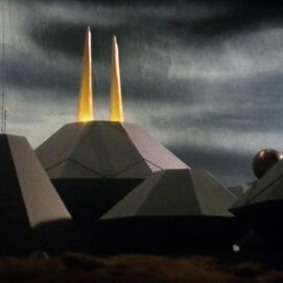

ROUND 1 MASTERPOST
synopses and propaganda under the cut
The Horns of Nimon
Synopsis
When the TARDIS collides with a spaceship en route to the planet Skonnos, the Fourth Doctor, Romana II and K9 soon uncover the horrific truth about its cargo. The ship is carrying young sacrifices for a powerful, horned creature called the Nimon.
But why is the creature so desperate for the delivery, and what other dangers await the time travellers? All will be revealed at the centre of the labyrinthine Power Complex on Skonnos...
Propaganda no propaganda submitted
The Seeds of Doom
Synopsis
When scientists in the Antarctic uncover a mysterious seed pod, the Doctor is called in to investigate. He soon realises it is extraterrestrial and extremely dangerous. At the same time, however, ruthless millionaire plant-lover Harrison Chase has learned of the find and decides he must have the pod for his collection of rare and beautiful flora. Meanwhile the pod itself harbours intelligent life with sinister plans of its own...
Propaganda no propaganda submitted
62 notes
·
View notes
Text
Source
#moss#botany#mosscore#bryology#science#bryophyta#moss facts#botany facts#moss fact#bryophytes#hyperspecific poll#polls#botany polls
108 notes
·
View notes
Text



The Princess of Wales’ Year in Review: February
February 1st - A video was released of the Princess of Wales and "Shaping Us" Campaign Champions
February 2nd - A video was released of the Princess of Wales at St Johns C of E Primary for the "Shaping Us" campaign. Photos of the visit were released on January 28th. Later that day, photos of the Princess of Wales and Roman Kemp were released in advance of the release of a video
February 3rd - A video was released of the Princess of Wales and Roman Kemp speaking about the early years and mental health
February 4th - Kensington Palace released a photograph of Catherine as a baby with her father, Michael Middleton. Catherine was later seen watching George play football with their dog, Orla
February 6th - The Princess of Wales visited St John's Primary in Bethnal Green to launch Children's Mental Health Week, as part of her work as Patron of Place2Be
February 8th - The Princess of Wales, Patron of Captain Harpreet Chandi's Solo Antarctic Expedition, visited Landau Forte College
February 9th - The Duke and Duchess of Cornwall visited Cornwall. They visited the National Maritime Museum Falmouth, before visiting the Dracaena Centre
February 19th - The Prince and Princess of Wales attended the British Academy Film Awards at the Royal Festival Hall
February 21st - The Princess of Wales visited Oxford House Nursing Home
February 22nd - The Princess of Wales, Joint Patron of the Royal Foundation of The Prince and Princess of Wales, held an Early Years Meeting
February 23rd - The Princess of Wales, Patron of the All England Lawn Tennis and Croquet Club, received Ian Hewitt at Windsor Castle. That afternoon, she received Major General Christopher Ghika (Regimental Lieutenant Colonel) and Lieutenant Colonel James Aldridge (Commanding Officer) in her role as Colonel of the Irish Guards
February 25th - The Prince of Wales, Patron of Welsh Rugby Union, and the Princess of Wales, Patron of Rugby Football Union, attended the Six Nations Rugby Match between Wales and England
February 28th - The Prince and Princess of Wales undertook an away day to Wales. First, as Joint Patrons of the Royal Foundation, they visited Brynawel House Alcohol and Drug Rehabilitation Centre; there, they announced a new project as part of a series to leave a lasting impact. The Royal Foundation brought together national and local organisations to support the design and build, and provide funding, tools, plants, seeds and materials for landscaping. Next, they visited Aberavon Celtic Leisure Centre before finishing by opening the new patient room at Wales Air Ambulance
#mine#royaltyedit#kate#yearreview#shaping us: st johns#shaping us: an important conversation#cmhw 23#landau forte 23#national maritime museum cornwall 23#dracaena centre 23#baftas 23#oxford house 23#ey meeting 23 4#ian hewitt 23#ghika aldridge 23#6nations23: waleng#wales23
39 notes
·
View notes